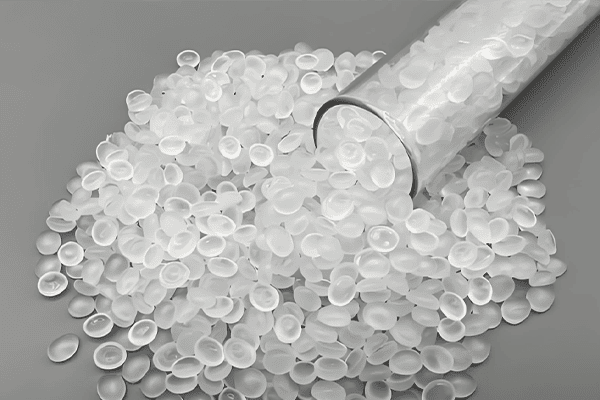The Complete Guide to Modern Water Bottle Production
Water bottle production combines advanced engineering and sustainable innovation to transform raw polymers into the ubiquitous containers that hydrate billions daily. This $250 billion global industry hinges on precision manufacturing, material science breakthroughs, and eco-efficient processes. We examine every stage—from polymer selection to finished bottle—highlighting cutting-edge technologies redefining packaging sustainability.

1. Core Materials in Water Bottle Manufacturing
The choice of polymer determines a bottle’s functionality, recyclability, and carbon footprint:
| Material | Key Properties | Primary Applications | Recyclability |
|---|---|---|---|
| PET | Lightweight, crystal-clear, strong barrier against CO₂ | Water/soda bottles (>70% market share) | Highly recyclable (rPET widely used) |
| HDPE | Chemical-resistant, opaque | Detergent, cosmetic bottles | Recyclable (lower value) |
| PP | Heat-resistant (>100°C) | Hot-fill sauces, medical bottles | Recyclable with limitations |
| LDPE | Flexible, squeezable | Sports hydration bottles | Limited recycling |
| rPET | Near-virgin properties, 30% lower carbon footprint | Food/beverage bottles (growing adoption) | Fully circular |
Recent advances include:
-
Barrier-enhanced rPET: Integrates SiO₂ coatings to extend shelf-life by reducing oxygen ingress by 40%
-
Bio-based PET: Derived from sugarcane, used in Coca-Cola’s “PlantBottle”
-
Self-reinforced PET: Molecular alignment technology achieves oxygen transmission rates (OTR) of 0.1 cc/pkg·day in single-layer bottles
2. Manufacturing Processes: From Pellets to Bottles
A. Preform Creation via Injection Molding
Plastic pellets are dried (critical for clarity) and melted at 250–300°C. High-speed electric injection molding machines form preforms—test-tube-shaped precursors. Modern systems like ALPLA’s ISBM (Injection Stretch Blow Molding) units achieve 98% material efficiency and cycle times under 5 seconds.
B. Blow Molding Transformation
-
Injection Stretch Blow Molding (ISBM): Preforms are reheated (~100°C) and inflated biaxially using 40-bar compressed air. This molecular stretching creates crystal-clear, strong bottles ideal for carbonated drinks. Output: 2,000+ bottles/hour .
-
Extrusion Blow Molding: Melted resin is extruded as a parison (hollow tube), clamped into molds, and air-inflated. Dominates LDPE sports bottle production for its flexibility and impact resistance .
| Process | Speed | Material Suitability | Wall Uniformity |
|---|---|---|---|
| ISBM | 2,000/hr | PET, rPET | Excellent |
| Extrusion Blow | 1,500/hr | LDPE, HDPE | Good |
| Compression Molding | 171,000 caps/hr | PP, PE | Precise |
Table: Comparison of primary bottle-forming technologies
3. Innovations Driving Sustainability
-
3D-Printed Tooling: Unilever and Serioplat slashed prototyping time by 6 weeks and costs by 90% using Rigid 10K resin molds for blow molding trials .
-
Dry-Molded Fiber Bottles: PulPac’s waterless technology produces paper-based bottles with 50% lower CO₂ than PET. Partners include Absolut Vodka and Sanofi for 2025 commercial rollout .
-
Low-Temperature Molding: Origin Materials’ CapFormer processes PET at 100°C (vs. conventional 280°C), cutting energy use by 50% and tripling mold lifespan .
-
Closed-Loop rPET Systems: ALPLA’s Thailand plant produces 30,000 tons/year of food-grade rPET, directly fed into bottle production lines .
4. Industry Case Studies
ALPLA’s Thailand Mega-Facility (2025): This 24,000m² plant integrates ISBM, injection molding, and rPET processing under one roof. It supplies 500 million bottles/year for Southeast Asia, emphasizing light-weighting (12g PET bottles) and mono-material designs .
Chen Way’s EBM Machines for Sports Bottles: Feature in-mold labeling (IML) for grippable surfaces and auto-deflashing units that reduce scrap by 15%. LDPE remains favored for its squeezability and safety .
5. Quality Assurance & Finishing
-
Laser Inspection: Scans 150+ bottles/minute for wall-thickness deviations as small as 0.01mm .
-
SPE/PEM Membranes: In hydrogen water bottles, these ensure 99.95% gas purity while blocking ozone/chlorine by-products .
-
Surface Treatments: Food-grade waxes or SiO₂ coatings enhance barrier properties and shelf-life .
6. Future Trends in Water Bottle Production
-
Digital Twin Prototyping: Virtual simulations predict bottle performance under stress, eliminating 30% of physical tests .
-
Bio-Polymer Breakthroughs: PHA/PLA blends that home-compost in 180 days while maintaining 6-month shelf stability.
-
Hyper-Lightweighting: 8g PET bottles (vs. standard 18g) using AI-optimized thickness mapping .
-
Carbon Capture Utilization: Integrating CO₂ waste into polymer synthesis (e.g., LanzaTech’s PET).
Conclusion: The Path to Circular Hydration
Modern water bottle production balances precision engineering with ecological responsibility. As ISBM and extrusion technologies achieve unprecedented efficiencies, the next frontier lies in material innovation—from PulPac’s fiber bottles to enzymatic PET recycling. With brands legally mandated to use 30% rPET in Europe by 2030, producers like ALPLA and Origin Materials are proving that sustainability and performance coexist. The future hydrates us without drowning the planet.

